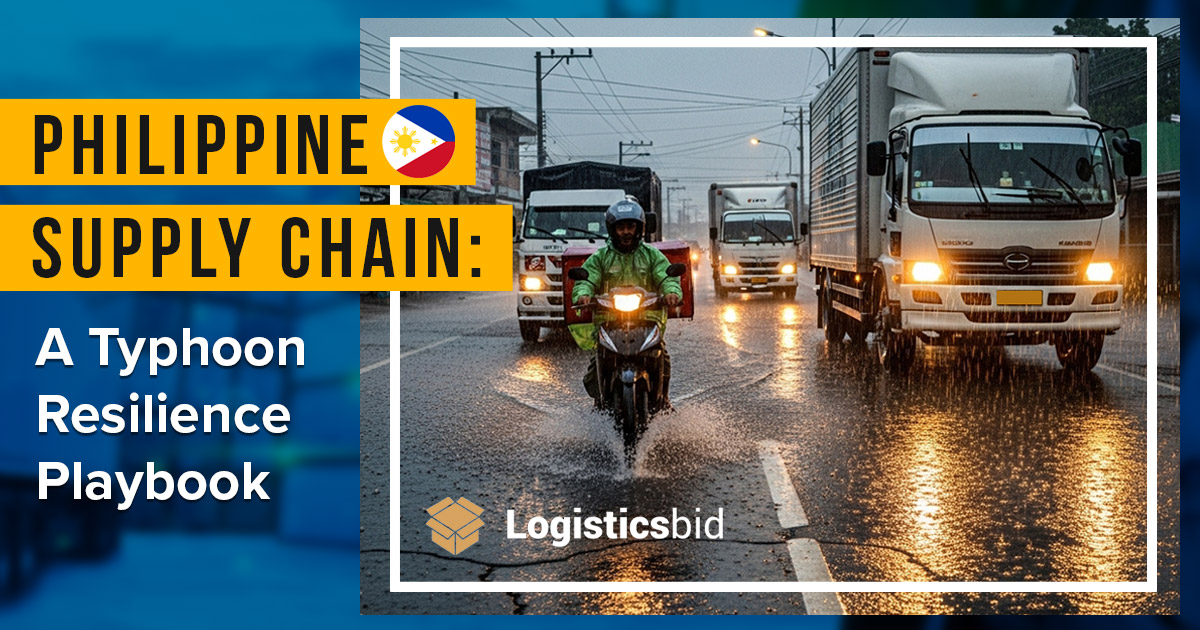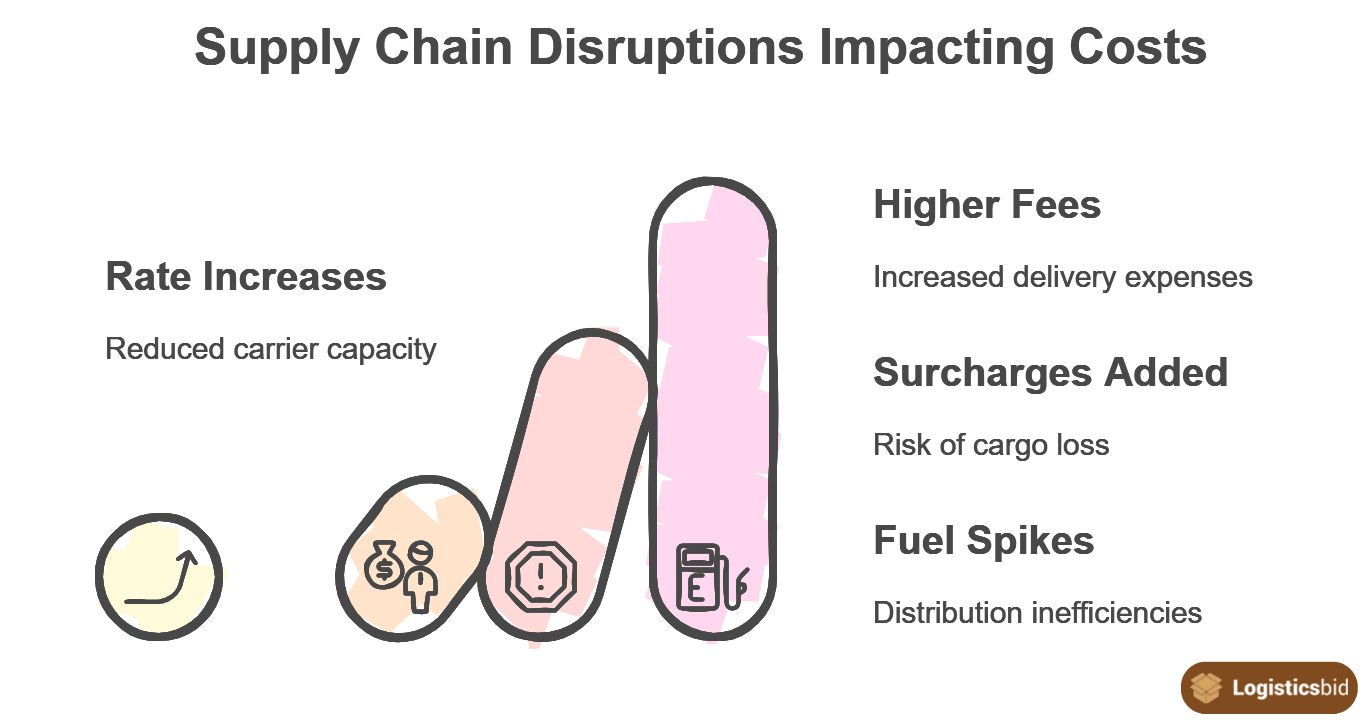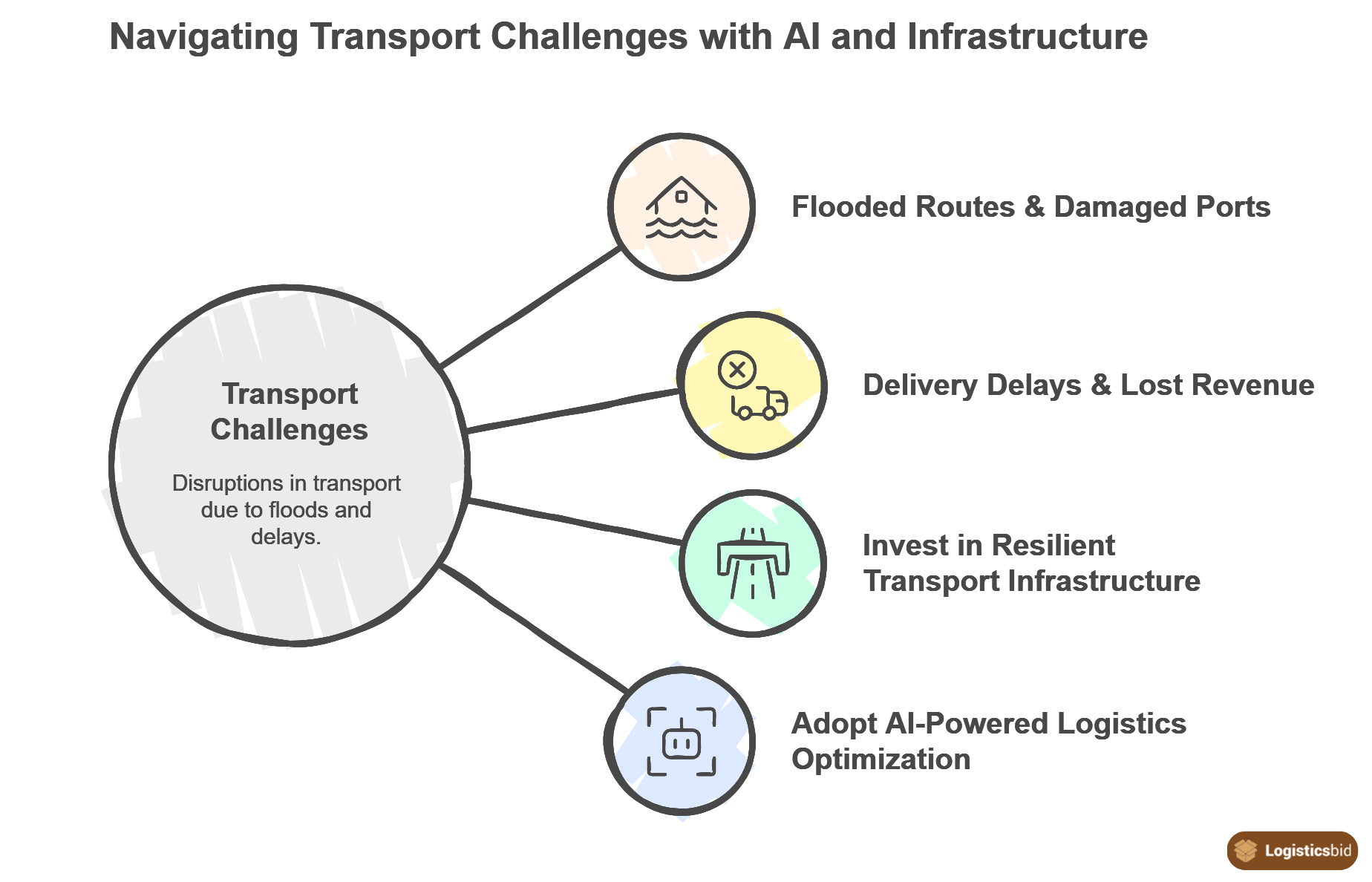
The recent devastation caused by Typhoon Tino in Cebu and other parts of the Visayas has once again highlighted the vulnerability of the Philippines’ logistics and delivery sectors during extreme weather events. According to BBC News (2024), widespread flooding and infrastructure damage left major roads submerged, paralyzing transport operations across Metro Cebu. The Inquirer reported that Typhoon Tino resulted in more than 130 fatalities and caused billions in property losses, with local officials calling for investigations into flood prevention and response efforts.
In a country where over 20 typhoons hit annually (based on PAGASA data), maintaining supply chain continuity during disasters is a national challenge that directly affects business operations, e-commerce, food delivery, and humanitarian relief logistics.
What Happens to Logistics and Delivery Systems During Calamities?
When typhoons strike, logistics networks face system-wide disruption, from traffic gridlocks and power outages to damaged ports and blocked highways.
Transportation Paralysis and Route Disruptions
Flooded roads and collapsed bridges halt the movement of goods. According to the Department of Public Works and Highways (DPWH, 2024) , infrastructure damage in Cebu alone exceeded ₱1.3 billion after Typhoon Tino, forcing rerouting and cancellations of over 70% of scheduled deliveries across the Visayas region.
- Road transport: Delivery vans and trucks cannot pass through submerged highways, especially in low-lying areas like Mandaue and Consolacion.
- Air cargo: Heavy winds ground flights, delaying airfreight shipments to and from the Mactan-Cebu International Airport.
- Maritime transport: The Philippine Coast Guard suspends ferry operations due to high waves, cutting off Visayas island connectivity.
Example: Fisherfolk and small retailers in Bohol reported on local Facebook groups that shipments of essential goods, including bottled water and fuel, were delayed for over 48 hours due to closed ports.
How Typhoons Cripple Logistical Flow
Typhoons typically affect four main logistical pillars: infrastructure, mobility, communication, and workforce.
- Infrastructure Damage: Roads, bridges, and airports become impassable. The DPWH (2024) reported that over 140 kilometers of national highways in Cebu and Bohol were blocked by landslides after Typhoon Tino.
- Mobility Restrictions: Floodwaters and fallen power lines disrupt ground delivery routes, causing long delays.
- Communication Outages: Telecommunication services often fail, complicating coordination between warehouses, drivers, and clients.
- Workforce Availability: Flooded homes and damaged communities prevent workers from reporting, slowing warehouse and delivery operations.
These intertwined challenges reduce delivery reliability and cause immediate economic shocks—affecting e-commerce platforms, small businesses, and humanitarian responders simultaneously.
How Do Typhoons Affect Supply Chain Economics?
Increased Freight Costs and Insurance Premiums
As Excelsior Freight Shipping explains, shipping rates can surge during disasters due to the combination of higher risk, limited availability of vehicles, and detoured routes. These added logistics costs are often passed on to consumers, raising prices of basic commodities such as rice, canned goods, and fuel.
 |
According to the World Bank (2023) , disaster-induced disruptions in the Philippines can reduce overall logistics efficiency by up to 25% in affected provinces, leading to temporary inflation in food and essential goods.
Which Delivery Sectors Are Most Affected?
1. E-commerce and Last-Mile Delivery
Online platforms like Shopee, Lazada, and GrabExpress are often the first hit. During Typhoon Tino, Grab Philippines temporarily halted operations in Metro Cebu for safety reasons, notifying customers of delays through in-app advisories. Riders face flooded streets, communication outages, and fuel shortages—all contributing to missed deliveries and lost revenues.
2. Food and Grocery Delivery Services
According to DispatchIT (2024), on-demand logistics providers can serve critical functions during disasters by connecting local suppliers to relief centers. However, without proper route optimization and real-time weather tracking tools, their efficiency drops significantly under typhoon conditions.
3. Humanitarian Logistics
Organizations like the Philippine Red Cross, UN World Food Programme (WFP) , and Philippine Disaster Resilience Foundation (PDRF) coordinate logistics for relief distribution. Yet, even these well-prepared networks encounter bottlenecks when roads become impassable or when local government warehouses are flooded.
Building Resilient Logistics Systems in Disaster-Prone Regions
Infrastructure Investment and Technology Integration
The Asian Development Bank (ADB, 2023) advocates investing in infrastructure that has typhoon resilience capability, such as elevated roads, flood-resistant warehouses, and renewable-powered logistics hubs.
Emerging technologies also strengthen typhoon resilience:
- GPS-based rerouting can allow dispatch systems to adjust to blocked roads in real time.
- Predictive analytics using AI and IoT sensors can forecast disruption severity, helping companies pre-position inventory.
- Blockchain tracking systems ensure transparency across fragmented supply chains during emergencies.
Coordination Between Government and Private Sector
A 2022 report by Munich Re noted that coordinated logistics planning between the government and shipping companies can reduce post-disaster supply chain recovery time by up to 40% . This collaboration is vital for archipelagic nations like the Philippines, where regional isolation complicates logistics recovery efforts.
Community-Based Delivery Models
Grassroots innovations—such as motorized boat transport in flooded barangays or crowd-sourced motorcycle riders—have emerged as adaptive responses. These models often bridge last-mile delivery gaps when large logistics fleets cannot operate.
Strengthening Future Preparedness
 |
- Infrastructure typhoon resilience should be prioritized in coastal and flood-prone areas.
- Digital logistics networks must integrate disaster-response features, including alternative route mapping and automated weather alerts.
- Public-private partnerships can enhance resource pooling for emergency deliveries.
- Training local couriers in disaster preparedness can prevent loss of life and ensure timely relief distribution.
Rebuilding a Future with Typhoon Resilience
The devastation of Typhoon Tino underscores the urgent need for disaster-proof logistics systems in the Philippines. Beyond the immediate loss of life and property, disruptions in the flow of goods and services amplify the crisis, delaying recovery efforts and driving up living costs.
By leveraging technology, sustainable infrastructure, and strong collaboration between government agencies and logistics providers, the Philippines can build supply chains that not only withstand natural disasters but also ensure continuity of essential services, keeping communities connected even amid the worst storms.
